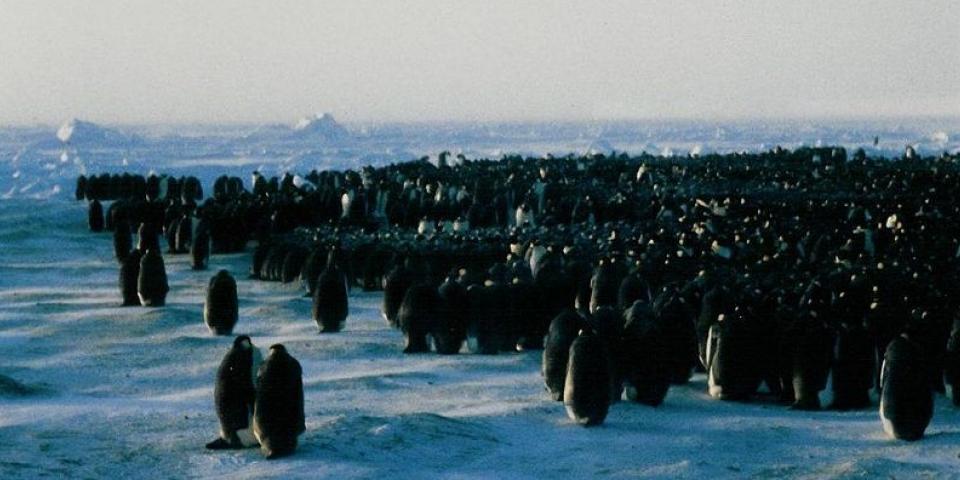- Posted By: beekeeper
- Comments: 0

I’m often asked if honey bees hibernate during winter. The simple answer to that is no! However, what they do is even more fascinating than hibernating.
When the weather is cold and wet, honey bees will be staying firmly inside their nice warm beehive. Throughout the winter the bees form a cluster (basically a ball) that covers a small number of frames. Inside that cluster they keep a constant temperature on average of 35oC while the rest of the inside of the hive remains the same temperature as outside. To maintain this temperature, the bees fan their wings to raise or lower the temperature.
The bees will also be conserving as much energy as possible to see them through to the springtime when the weather will be warm enough for them to fly out to start replenishing their much depleted winter stores.
And here’s where honey bees and penguins have something in common… While the bees are in their cluster, just like Emperor penguins in Antarctica, the bees on the inside will change places with the bees on the outside to ensure all the colony stays warm. They do this because if the outer temperature of the cluster drops below 9oC then their flight muscles will no longer move and the bees will drop from the cluster and die from the cold.
Once a week I go and check my three colonies to listen to the inside of the beehive. Just by placing an ear on the outside of the brood box I can hear them inside and have a rough idea where they are as they move around to eat their winter stores. Another tell-tale sign of where they are is by looking on the ground underneath the hive to see where there is a strip of chewed wax on the ground that they have nibbled through to get at their stored honey. During the winter months, it's important that the beehives are not disturbed or opened as any disturbance causes the bees to use more energy and by doing so, they eat more of their valuable stores that needs to eke out to the springtime.
I can’t wait to open up to see how the bees are doing, but that first quick inspection won’t be until March at the earliest when we start seeing the sun more often than we are at the moment to bring that temperature back up for our bees to start venturing out and going about their busy business to start gathering their pollen and nectar. Once this starts coming in, the queen will ramp up her egg-laying to bring her colony back up to full strength with anywhere between 40,000-60,000 honey bees.
The image used has been published under the terms of a Creative Commons License and is attributed to WikiMedia Commons.
